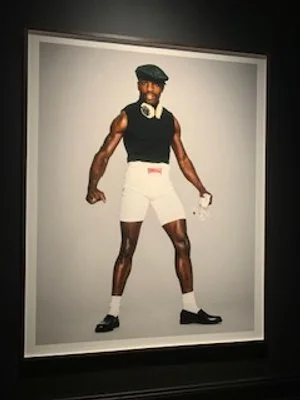Review: The Face Magazine
National Portrait Gallery
By Erin Deborah Waks
As a journalist myself, I have a keen interest in understanding the complexities and politics of the industry. I find it compelling to comprehend better the often glamorised perspective of working at magazines for one key reason - it reminds me why I wanted to be a part of this world, of what I wanted to do, to contribute to the world.
The National Portrait Gallery’s latest exhibition did just that. The Face Magazine: Culture Shift shines a light on the pioneering cultural publication that has shaped the style, trends and politics of youth-focused journalism in Britain. Published from 1980 to 2004, its grungy, non-aesthetic aesthetic led the way for a more people-focused take on magazines.
The exhibit, with its many excerpts from the magazine itself and blown-up versions of its photography, demonstrates just how much fun popular culture could be. The magazine - and this portrayal of it in central London - is a true indicator of how much enjoyment can be had in creating art.
The Face brought to the fore many up-and-coming designers, portraying the power the media has to truly make or break careers, especially in the creative industry. The images and photography on display, while perhaps not too jarring for a modern audience, were evidently trailblazing at the time - from a young, punk-style Kate Moss to a David Beckham dripping in soy sauce, you’re brought into the world of experimental creation. You’re abundantly aware this was part of published media in a pre-internet era.
Loud and proud, the exhibition hall itself creates an atmosphere akin to what one would imagine was felt at photoshoot sets. With a soundtrack of hits by Neneh Cherry, Elastica and Daft Punk in the background, I found myself revelling in what the world of magazines looked like in their beginnings, in the day where they could truly create a culture, not just reflect and respond to it. I felt a nostalgia for a journalism I have not yet experienced - and perhaps never will, for the world has moved on and ‘grunge’ is no longer new - and a sense of renewed pride in what I, and we, do.

